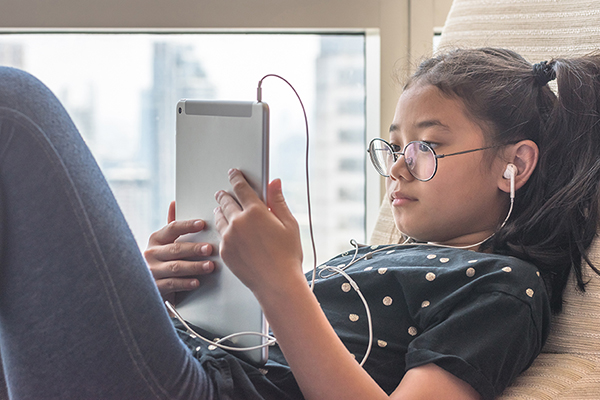
Video is an extremely engaging medium for children, and research suggests that it may help promote social-emotional learning (SEL) in children. Given the ongoing debate about the value of screen time, many parents and educators are seeking research-supported best practices for using TV and videos to help support children’s learning and development. Look no further – we’ve summarized the research to give parents and educators 3 strategies for using videos to support SEL in children of any age.
1. Consider which SEL skills you’d like to promote
When using videos to promote SEL, consider which specific competencies (skills) you’d like to promote, and select videos targeted to those skills. Prosocial TV/videos have stronger effects on certain SEL skills versus others. In particular, the research evidence is strongest for the impact of prosocial TV/videos on increased altruism and positive social interactions, and reduced stereotyping in children. This suggests that videos about getting along with diverse people are likely to have positive social impacts. Prosocial TV/videos may also improve other skills, like self-management skills and social problem-solving. Unfortunately, there is no research out there specifically on self-awareness, so if you are hoping to target this skill, you might consider other evidence-based strategies and interventions, such as the RULER or MindUp curricula.
2. Engage with children while watching prosocial videos
Children learn best when information is reinforced in many different ways – for example, through video, real-world experiences, and interactions with caring adults. For this reason, studies have found that prosocial TV/videos may have stronger effects when parents are prepared to support children’s learning by participating and engaging actively, such as by watching and discussing videos with their children. Sometimes videos even offer printed parent materials or web-based resources to support parents in having these conversations. Children may also learn more from prosocial TV/videos if they are accompanied by real-world activities and materials, including storybooks, comic books, workbooks, and classroom activities or discussions.
3. Focus on content, not length
Both short (10 or fewer minutes) and long (1 hour or more) videos positively impact children’s SEL. When choosing a video, focus on whether the material is relevant and developmentally appropriate. Do characters clearly model the SEL skill you are trying to teach? Do they name the skill or explain the steps involved? Is this done in a way that a child can understand and relate to? Also consider whether you are able to connect the video to the child’s own day-to-day experiences. In addition, try watching the video more than once over time, since repetition can support learning, particularly for youngerchildren.
There are many great ways to promote children’s social-emotional skills (see our other SEL blog posts below). As we continue to be surrounded and impacted by technology, television and videos may be one promising way to support children’s SEL as part of healthy media use, especially with active support and engagement from caring adults.
Here are some prosocial videos to get you started:
- Common Sense Media Recommendations for Character Development Media (recommendations by age group)
- Daniel Tiger’s Neighborhood (ages 3-5)
- My Friend Rabbit (ages 3-5)
- Esme and Roy (ages 4-6)
- Arthur (ages 4-8)
More on SEL:
- Learn the basics of what SEL is, specific skills students develop when SEL is taught, and how a classroom can be impacted by SEL by reading Helping students help themselves.
- Get tips and resources on incorporating SEL into everyday academic instruction or selecting a standalone SEL program.
- Keep up with all of our posts on SEL by bookmarking our SEL Tag.
